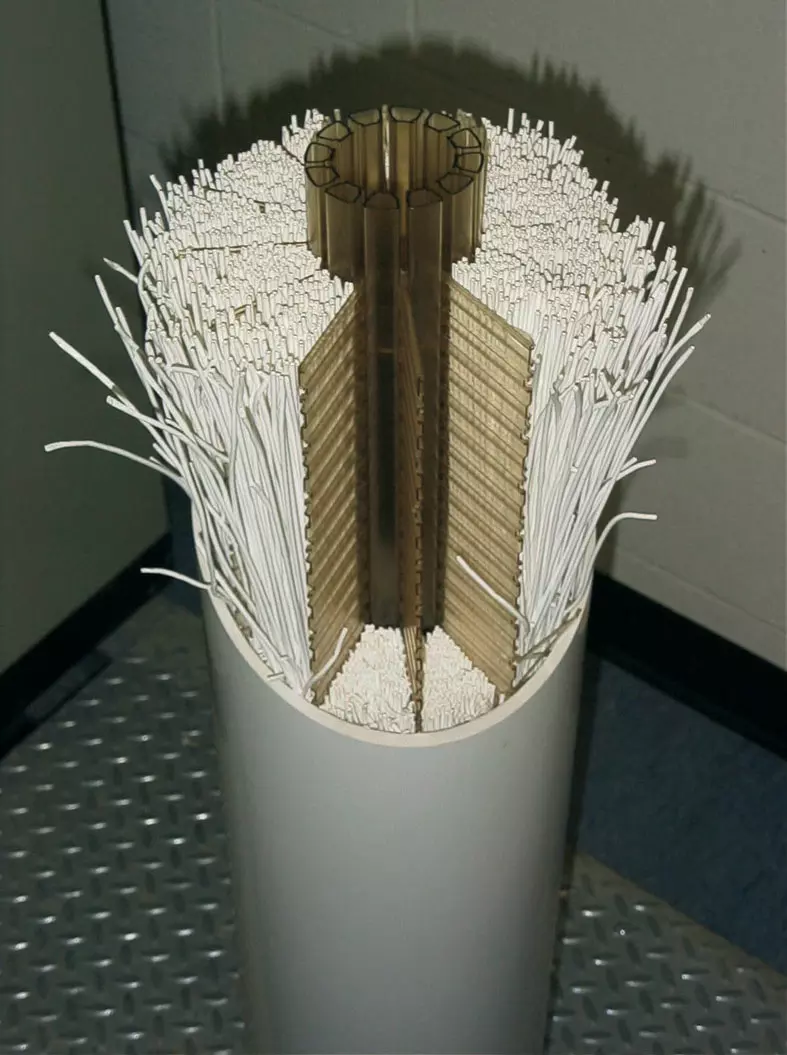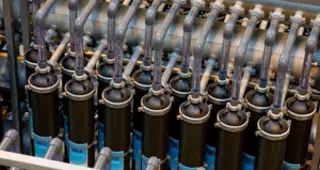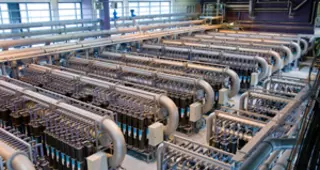The Opaline™ solution : The sanitary safety for drinking water
Overview
Developed by Veolia Water Technologies for drinking water production, Opaline™ combines membrane technologies and activated carbon adsorption in order to remove:
- pesticides,

- Total Organic Carbon (TOC)
- endocrine disruptors
- micro-organisms,
- turbidity,
- taste and odours.
Features and Benefits
Opaline™ :
- improves drinking water quality, with regards to safety, organoleptic parameters (taste, odours) and other factors (colour, ...),
- guarantees a high quality potable water,
- constitutes a reliable and safe solution,
- reduces construction costs through a compact design.
Quality of the produced water:
- Turbidity < 0,2 NTU
- Pesticides < 0,1 µg/l
- Parasites: 5 log removal
- Bacteria: 5 log removal
Applications
Opaline™ is particularly well adapted for the treatment of :
- Ground waters (including karstic waters) contaminated with pesticides and micro-organisms
- Surface waters with low turbidity, contaminated by micro pollutants and micro-organisms, or as polishing.
References
Opaline™, as the ultimate solution to secure drinking water production, is already used in 24 plants around the world.
|
Flow (m3/d) |
Commissioning
|
|
|---|---|---|
|
Parker, CO-USA (Kruger Inc.) |
37 850 |
2011 |
|
Lucien Grand (OTV France) |
60 000 |
2009 |
|
L'Hay-les Roses (OTV France) |
150 000 |
2008 |
|
Nancy (OTV France) |
90 000 |
2007 |
|
Annet-sur-Marne (OTV France) |
3 600 |
2002 |
|
Windhoeck (Namibia) |
21 000 |
2001 |
|
North Mymms (United Kingdom) |
36 000 |
1999 |
|
Clay Lane (United Kingdom) |
160 000 |
1998 |
|
Ocana (OTV France) |
300 |
1996 |
Applications
Operating Conditions
Opaline™ can be implemented in two different ways :
- Opaline™ S :
Sequential water treatment whereby the activated carbon stage is separate from the membrane filtration stage. Either GAC or PAC activated carbon can be used. - Opaline™ C :
The activated carbon stage is combined with immersed membrane filtration. Powdered Activated Carbon (PAC) is used in this case.




